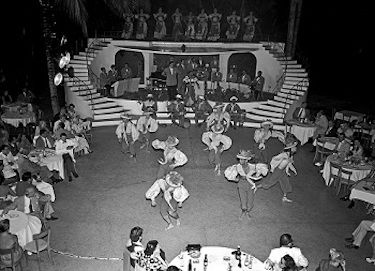 ***Updated: November 15, 2018***
***Updated: November 15, 2018***
Gamblers thrive on stimulation and casinos depend on it because they know people make ill-considered decisions when in pursuit of it. So when a game called “Multiple Action Blackjack” comes along, it’s obviously going to entice legions of fans, most of them rabid.
It originated on Fremont Street in Las Vegas at Four Queens Hotel and Casino back in 1991, receiving a copyright as well as patent. When they went to sell it to other places, numbers showed revenues were significantly higher than traditional attractions, enabling Four Queens representatives to ask for monthly licensing terms of $500 per table, which was quite high at the time.
Rules
Utilizing four, six, or eight decks and unfolding exactly like Standard 21, as assumed, the twist comes with a “multiple action” component. Everyone seated has three circles on the green felt in front of them instead of one, operators requiring two or three antes to be made on each round, then one hand is received to repeatedly challenge the House.
To illustrate this, imagine someone has 8 / Jack against a dealer 5 so they stand on 18, which now becomes their total for all three rounds. The croupier’s hole card is a 7 and draws a King to bust, resulting in a customer win (18 vs. 22). The dealer then discards the 7 and King and draws to the exposed 5 for a second time, promptly getting a 10 and 5 to consequently taking the ante (18 vs. 20). Finally, they remove the 7 and King to draw two Jacks to add to the 5 and bust, hence the patron is victorious again (18 vs. 25).
That is multiple action. Simple and exciting.
Winning Strategy
Here is another hypothetical situation to highlight differences between Multiple Action Blackjack strategy and other variants. Let’s say a player holds 16 against a 10. According to traditional strategy, strictly one correct choice exists: hit
. That rule is predicated on billions of computer hands proving that hitting produces the lowest percentage of losses when in this unfortunate position.
However, hitting a 16 and busting here loses three bets, not one. That possibility turns even intelligent competitors conservative, too often standing
in hopes the dealer busts at least once, leading to recouping some chips on the round.
This is absolutely the wrong strategy to employ as the proper tactics for Multiple Action are identical to Single Hand, with no exceptions. Sadly, risking triple the stakes commonly shakes player confidence and leads to incorrect conclusions.
Even though House advantage doesn’t change, veteran participants may end up beating themselves, while less experienced ones lose more money than usual. No wonder hosts are eager to add this table to their offering.
Card Counting
Las Vegas operations aren’t the only ones enamoured with Multiple Action Blackjack, as card counters flock to it. Bet size fluctuations that counters use when shoes are favourable or not are much harder to detect at tables permitting several hands. The triple wagers can also allow skilled players to profit from a risk averse strategy since they don’t have to double and split as much to reap the same returns, therefore, exposing less bankroll.
So if it’s a favourite of both casinos and professionals, who is losing on this game? Like always, it’s average people just sitting down for crazy thrills and good times. Make sure to constantly stay focused when partaking in this fast and furious diversion, otherwise chip stacks will shrink sooner rather than later.
